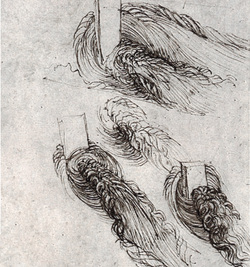
Policy and Grading
Schedule
Homework
Project
Solutions
Book
YouTube
Transport In The News
Gallery of Fluid Motion
FYFD
NCFMF Films
2014
2015
2016
2017
Transport Phenomena Fall 2018 Project Instructions
Project description
We will be recreating simple, historic, and visual demonstrations of fluid dynamic phenomena. The purpose of the project is to help students gain an intuitive sense of fluid behavior across different flow regimes, to develop experimental technique sufficient to demonstrate a quantifiable phenomenon, and to gain a sense of the historic development of a new (at the time) field of physics.Group formation
Groups of ~4, randomly assigned, with 1 “silver bullet.” A silver bullet is a request to exclude 1 person from your group, but we can’t guarantee we’ll be able to accommodate all silver bullet requests.Project milestones
- Due 9/14 @ end of class: List your top 3 choices, in order of preference. We’ll do our best.
- Due each project day before you walk in the door, starting 9/17: fill out your team's google sheet with 1) The plan for what you’ll work on during the class period (to be agreed upon by your team before class), and 2) a rating 1-3 describing how much help you’d like during the class (1 is we’re probably ok, 2 could use some suggestions, 3 oh no what are we going to do).
- Due 9/24: A <1 page mini-proposal that includes a details like a timeline and milestones. It should also explain to us what is interesting about your project, and what its relevance in the world is. (Suggested timeline and milestones are outlined below.)
- Due 10/1: A "works like" proof-of-concept demonstration
- Due 10/15: A parts list and shop drawings
- Due 11/5: A prototype
- Due 11/26: Quantitative results
- Due : Video
- Due : Video peer grades
Assessment
The project counts as 1/3 of your total grade in the course. The 100 points available for the project portion are broken down as...- 25 points for team contribution
- Prof portion: 15 points
- Peer grade: 10 points.
10 points - yeah, they cool, they work hard, and they're smart
6 points - 2 out of 3
3 points - Please don’t make me work with them again, but it wasn’t the most difficult thing I’ve experienced at Olin.
- 25 points initial demonstration and prototype
- 10 points for "works like" demo
- 10 points for prototype
- 5 points for a prototype that works
- 25 points for a quantifiable result
- Could you measure something? +10 points
- Could you measure something that matched theory within 1/10x-10x? +5 points
- Do you have a model that resembles your measurement? +10 points
- 25 points for the final presentation
- Prof portion: 15 points
- Peer grade: 10 points
10 points - This project was so well explained in the video that I could describe it to both my grandmother and one of the the other Olin profs. If it wasn’t finals week I’d watch it twice just for pleasure.
7 points - I could explain the project to either my grandmother or a physics prof, but the video wasn’t sufficiently clear that I could describe what happened on both levels.
3 points - I think I followed along, but would have trouble summarizing it afterwards. If it wasn’t finals week I’d have to watch it twice to try to understand.
Final deliverable
The final deliverable for this project is a YouTube video demonstrating and explaining the measurement you made, and a COMSOL simulation that models the phenomena. The idea of a model implies that not all aspects of the experiment need to be recapitulated in the simulation. Wise choices about what is important to include and exclude from the model reflect a good understanding of the underlying physics. The video will be graded on content only, not on production quality. Though please realize that that poor production quality can be distracting to the observer, which can impede understanding, similar to how poor handwriting can make comprehension of a letter more difficult. Below are elements that will be found in a high quality final project:- Did you explain why Taylor chose to do this particular experiment? Of the infinite things in the world that are unknown, why did he choose this particular measurement?
- What is the modern relevance of the experiment? Where is the phenomena exhibited in the natural world?
- Did you clearly explain the apparatus and the steps of the experiment?
- Did you clearly explain the material properties and forces that govern the experiment, as well as those that are not important? Are there certain regimes in which the experiment’s behavior changes?
- Does your model support an understanding of the physics rather than confound it? Is there a clear take-home message?
- Note that you can still address all of these points if your apparatus didn’t work.